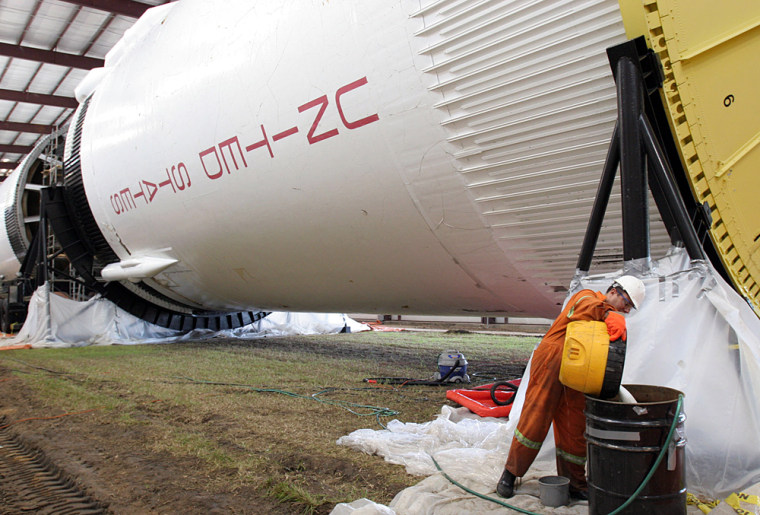It was designed to go to the moon, but a little coastal humidity is all it took for the towering Saturn V rocket at Johnson Space Center to begin to rot like an old pickup left in the front yard.
Owls and mice moved in. A green leafy plant sprung out of one of the escape module's red boosters. Some yellowish-orange spongy stuff sprouted from its side. Years of rainwater had left the rocket's aluminum underside corroded.
It was an embarrassment.
Greg Burch, a Houston lawyer escorting some international clients to the space center, was so dismayed he started a local money-raising effort last year to restore the rocket.
Now, after $3 million in improvements from public grants and private donations, the progress so far is "almost miraculous," Burch said. If another $1 million can be raised, the job should be done by year's end.
From 1968-1972, Saturn rockets propelled 24 astronauts around the moon, a dozen of them walking on its surface.
Considered an engineering masterpiece at the time, Saturn V is taller than the Statue of Liberty. It had a takeoff weight exceeding that of 25 fully loaded airliners and produced as much power as 85 Hoover Dams, according to the NASA history office.
The Saturn V on display at Johnson Space Center never made it to space, however. It was to be used in the Apollo 18 mission, but the mission was canceled as the moon program waned.
For the past 28 years, the rocket has greeted visitors at the entrance to the space center; two other Saturn rockets are on display at Kennedy Space Center in Cape Canaveral, Fla., and Marshall Space Flight Center in Huntsville, Ala.
The Houston rocket is currently surrounded by a temporary structure and will soon be air conditioned to protect it from the sticky summer heat.
"It will last indefinitely as long as it is kept out of Houston's ozone and humidity," said Allan Needell, curator of the Apollo Collection at the National Air and Space Museum. "Once we get the air conditioner on, we will have arrested its 30-year decline."
Needell says workers have removed about half of the bacteria, mold and mildew that was slowly destroying the rocket.
"It actually looks quite good," he said. "By the end of the month, we will have a clean, structurally stabilized rocket."
Once restoration is complete, the Smithsonian Institution, which owns the rocket, believes nearly a million visitors will visit it each year.
